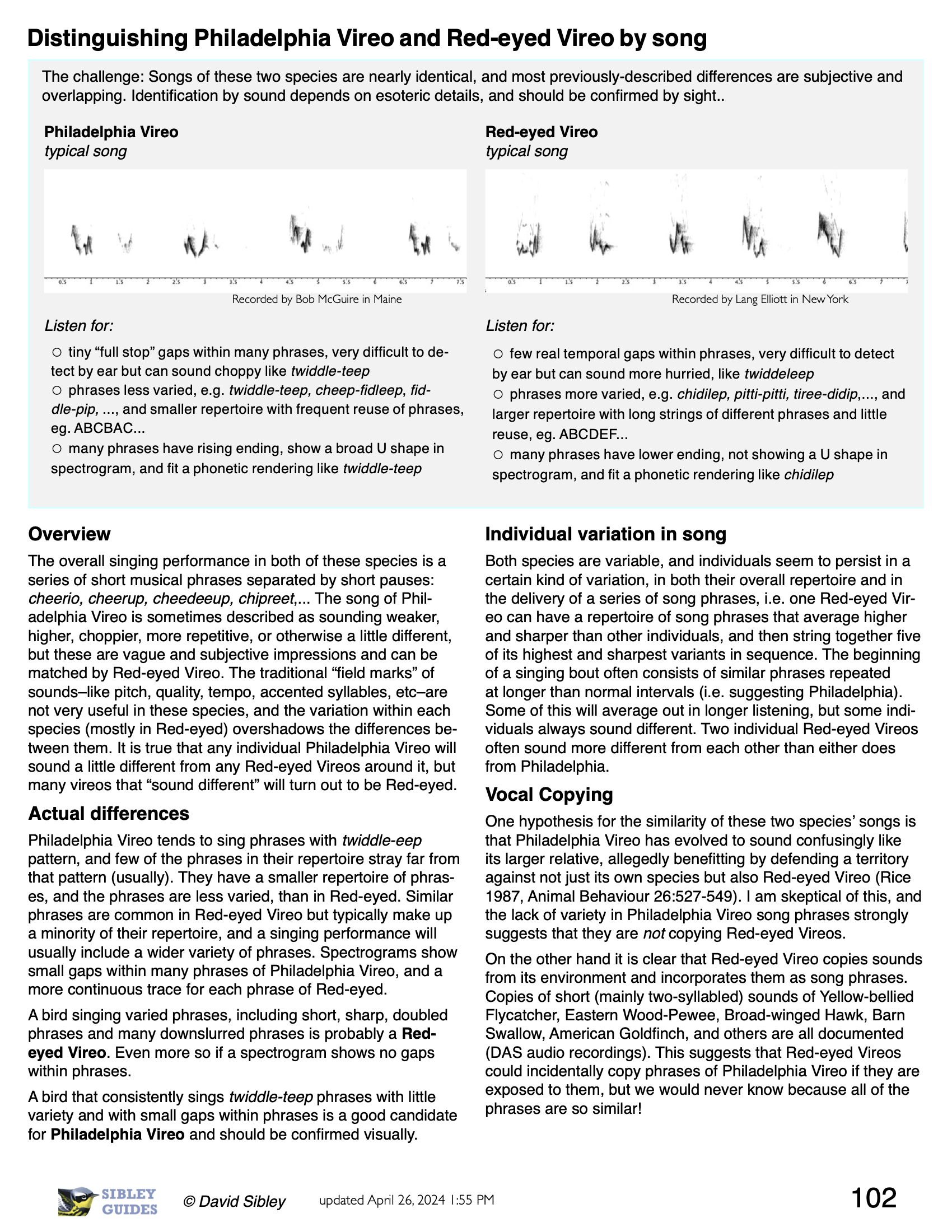Possible? It might be, but most of the widely published “differences” are too subjective and/or too variable to be of any value. I dug into this a couple of years ago and discovered some details that seem more reliable, which are summarized in the one page file here (also as a pdf via this link: VireoSong). I still don’t give much credence to “audio-only” records of these species. You have to see the bird to be sure.
The Cornell app Merlin is more confusing than helpful in this case, and struggles with these two species just as much as any birder does. When dealing with a single individual vireo, Merlin often identifies subsequent phrases as different species. It will undoubtedly improve, but for now it offers no real help in this challenge.
Sadly, Philadelphia Vireo seems to be retreating northward out of its former breeding range in New England, but it’s hard to get a handle on the current status because so many reports are of birds identified only by song. I hope that the song details I’ve highlighted can be refined by field testing and will lead to better audio identification criteria for these two species; or at least raise awareness of the challenge, and encourage people to listen and look more carefully.



Please add the URL to the two bird songs in the PDF. So, one URL for the Philadelphia Vireo recording by Bob McGuire in Maine and another URL to the Red-eyed Vireo song recording by Kang Elliott in New York.
That will enable us to hear the two songs, compare them and personally understand about how they sound to our ears.